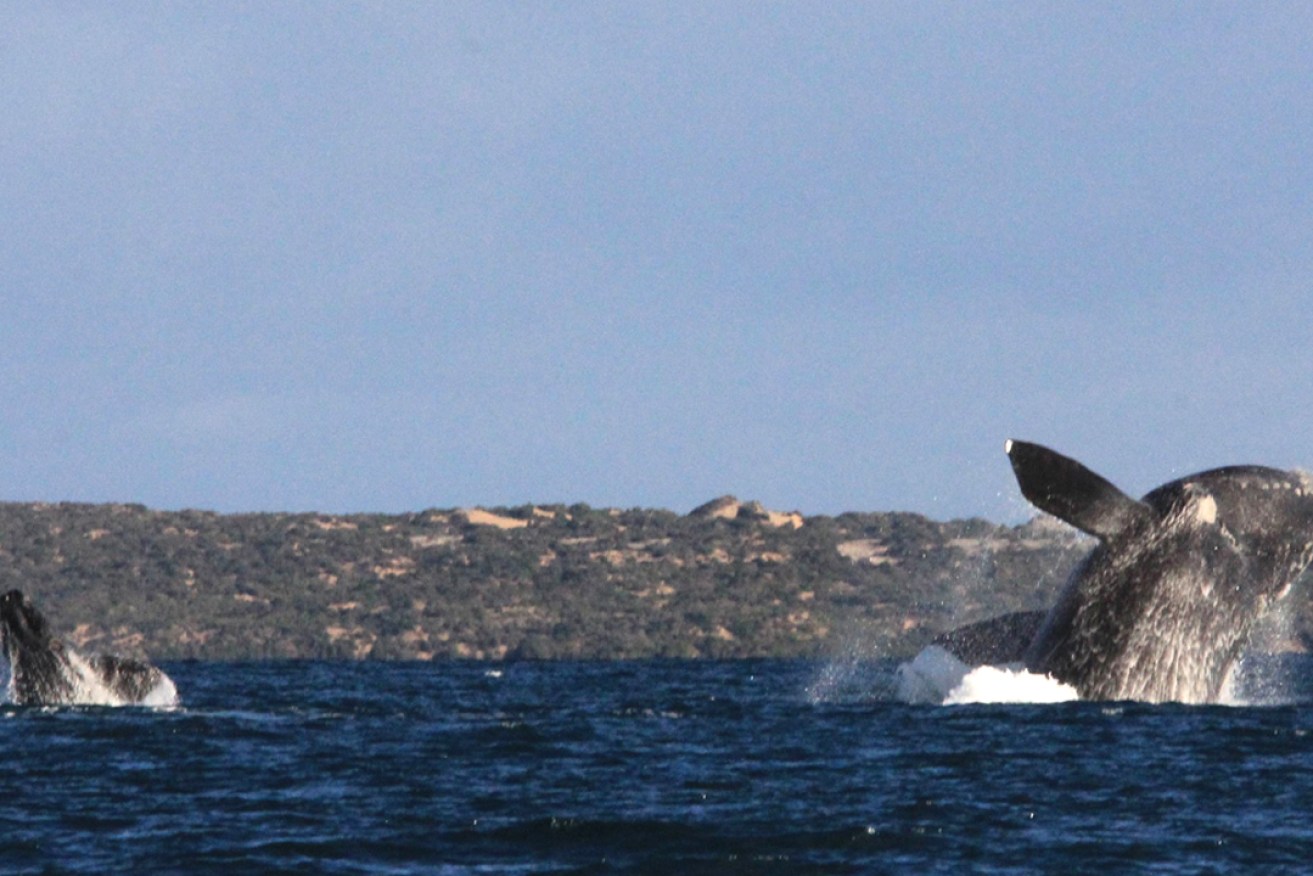Whales begin gathering at Head of Bight
The first southern right whales have arrived at Head of Bight for the calving season, marking the beginning of what is expected to be another bumper whale-watching season.


Picture courtesy of Curtin University Great Australian Bight Right Whale Study.
Two whales were seen in the shallow waters at the beginning of the week, with a further sighting yesterday. The Head of Bight whale season typically runs from May to October.
Last year, a team of researchers from Curtin University counted up to 172 whales including 81 mothers with calves on a single day – a record since data began being collected in 1991.
In 1996, about 33,000 people went through the Head of Bight Visitors Centre in 2016, which is on Yalata Aboriginal Lands and run by the Aboriginal Lands Trust. The centre, perched atop the Bunda Cliffs overlooking the Bight, includes several boardwalks and viewing platforms.
Aboriginal Lands Trust acting CEO John Chester said a good number of whales and tourists were again expected this season.
He said in the peak of the season, between July and September, large numbers of mothers with calves could be seen within 50 metres of the shore.
“And you’re not just looking at one; there could be two or three in close suckling their calves and a bit further out in the Bight the males will be breaching – it’s just absolutely spectacular,” Chester said.
“It’s the only place in the southern hemisphere where you get that many whales together at one time.
“From now on there will probably be more turning up every day and by the end of May there will likely be a lot of whales there giving birth.”
Southern right whales (Eubalaena australis) were almost wiped out by commercial whaling in Australia from 1820 to 1935. There are now an estimated 12,000 southern right whales in the world, with sub species in Australia, New Zealand, Argentina and South Africa.
The whales – which can grow up to 18 metres long – spend the summer months in Antarctic waters, feeding up on krill. Expecting mothers migrate to the warmer, sheltered waters at Head of Bight in May and stay until October.
Its shallow, sandy bottom, protection from wind and its location within the Great Australian Bight Marine Park has helped Head of Bight become one of the largest southern right calving areas in the world.
The Head of Bight Visitor Centre welcomes up to 250 whale-watchers a day at the height of the season.
“It picks up as the season goes along and the whole car park is just full of caravans, cars and four-wheel-drives,” Chester said.
“The income we are getting is put back into the management of pest plants, feral animals and the upkeep of the platforms and the centre.
“We’re already now looking at developing it further – it’s starting to outlive its size.”
This article was first published on The Lead.




